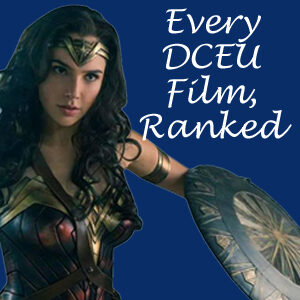It’s perhaps strange that “Blade” (1998) became the first successful big-screen enterprise for Marvel Comics, considering that he’s not one of the A-list superheroes, and the saga’s blood and violence target a niche audience rather than a mass audience. On the other hand, similar to how Marvel tested the waters with “The Punisher” (1989), it makes sense to start cautiously before launching A-listers like the X-Men (who hit cinemas in 2000).
Somewhat cheesy, but has aged well
Based on the comic by Marv Wolfman and Gene Colan that launched in 1973, “Blade” has some cheesy 1990s elements but has aged fairly well. Wesley Snipes does too much posing and strutting and mugging by today’s standards, and Mahershala Ali will certainly offer more acting chops in the recently announced Marvel Cinematic Universe version of Blade.
But the buff, shades-wearing Snipes looks the part, and he’s morose enough to communicate Blade’s stuck-between-worlds ennui – while also stepping up to deliver a one-liner now and then, including the random yet popular clincher as he defeats the bad guy: “Some m*****f*****s always tryin’ to ice-skate uphill.”

“Blade” (1998)
Director: Stephen Norrington
Writer: David S. Goyer
Stars: Wesley Snipes, Stephen Dorff, Kris Kristofferson
Complementing the action hero stylings of Blade are three people doing some actual acting. N’Bushe Wright is Karen, a scientist who gets bitten and infected with vampirism. She’s the audience surrogate, because her search for a cure brings her into Blade’s world where she (and we) learn the mythology. As villain Frost, Stephen Dorff smartly plays things down the middle and allows his sidekick – Donal Logue’s Quinn, who keeps losing arms in a running gag – to do the silly scenery chewing.
And Kris Kristofferson is Whistler, Blade’s grizzled mentor and father figure — although neither admits to anything more than a mutually beneficial arrangement. As Blade puts it, Whistler makes the weapons and Blade uses them.
Jittery at first, but it settles down
Stephen Norrington’s direction worried me at first. The opening dance club number where vampires frolic in a shower of blood is evocative but jittery. But then he settles down and gives crisper showcases of the subsequent action scenes.
The writing by superhero-film staple David S. Goyer is workmanlike. “Blade’s” vampire mythology is more complex than most, but Goyer communicates it clearly. We have natural-born vampires, vampires who are turned by other vampires, and the rare human/vampire hybrid (and even that is simplifying things) of Blade, “the daywalker.” In a nutshell, they all hate each other.
The climactic ritual scene, wherein Frost makes himself into an uber-vampire using an ancient prophecy and a dozen unwitting members of a vampire council, is one of the more engaging special-effects laden climaxes you’ll find in a superhero film.
Council members turn into flying vampire-bat skeletons and coalesce with Frost’s body — not something you see every day, and also a clear illustration of how he’s getting his power. Mark Isham’s score has some foreboding bass to it early on, but in the final showdown, the music is generic, reminding me of the processed score from “Lara Croft: Tomb Raider” (2001).

The creature effects are a mixed bag, sometimes looking awesome and sometimes looking like obvious CGI (although when Frost regenerates after Blade cuts him in half, Blade’s silent “What the f***” sells the moment). I like how when Blade kills vampires (with silver stakes or bullets here, rather than the traditional wood), they get dusted in a way that’s different from on “Buffy,” which pioneered the dusting effect a year prior. Here, they burn up unevenly, and we can see the skeleton.
Give-and-take with ‘Buffy’
If “Blade” borrows from “Buffy” in that regard, “Buffy” certainly completes the tradeoff in the following years, as Angel’s mentor is named Whistler, and the one-off villain Balthazar looks exactly like Pearl from “Blade” – a head surrounded by a mound of blubber and two stubby arms. And when Angel must drink from Buffy’s neck to live, it calls to mind a key moment between Blade and Karen.
But “Blade’s” personal drama leans toward the medical side rather than the personal, and rounding out its identity as an action style piece are Snipes’ acting choices, the blocked-off action chroreography and the processed music.
Despite some “outsider hero” trappings, it’s with good reason that no one ranks “Blade” as an intimate psychological drama. It’s due for a modern MCU update with a top-shelf actor in the title role, but I’m intrigued enough to watch the rest of the original trilogy.

